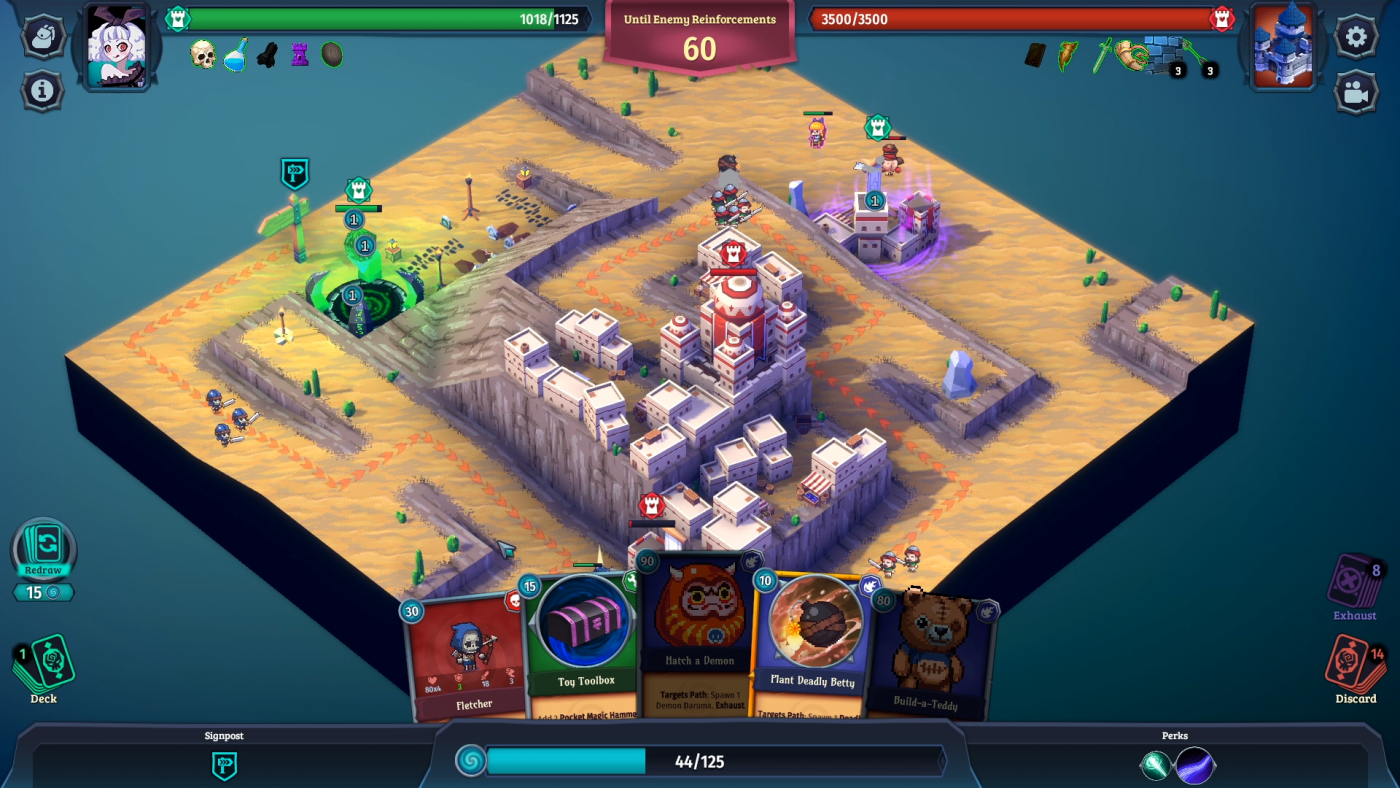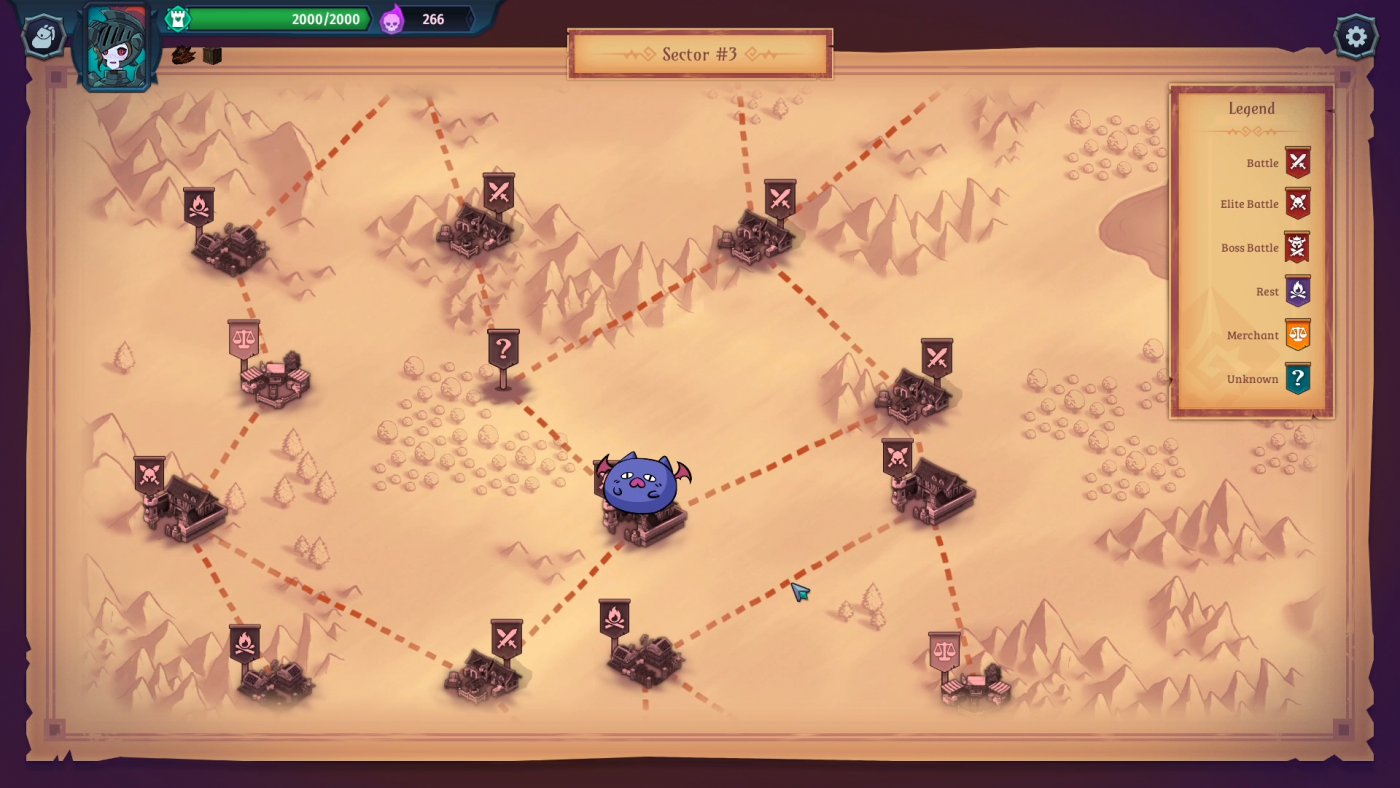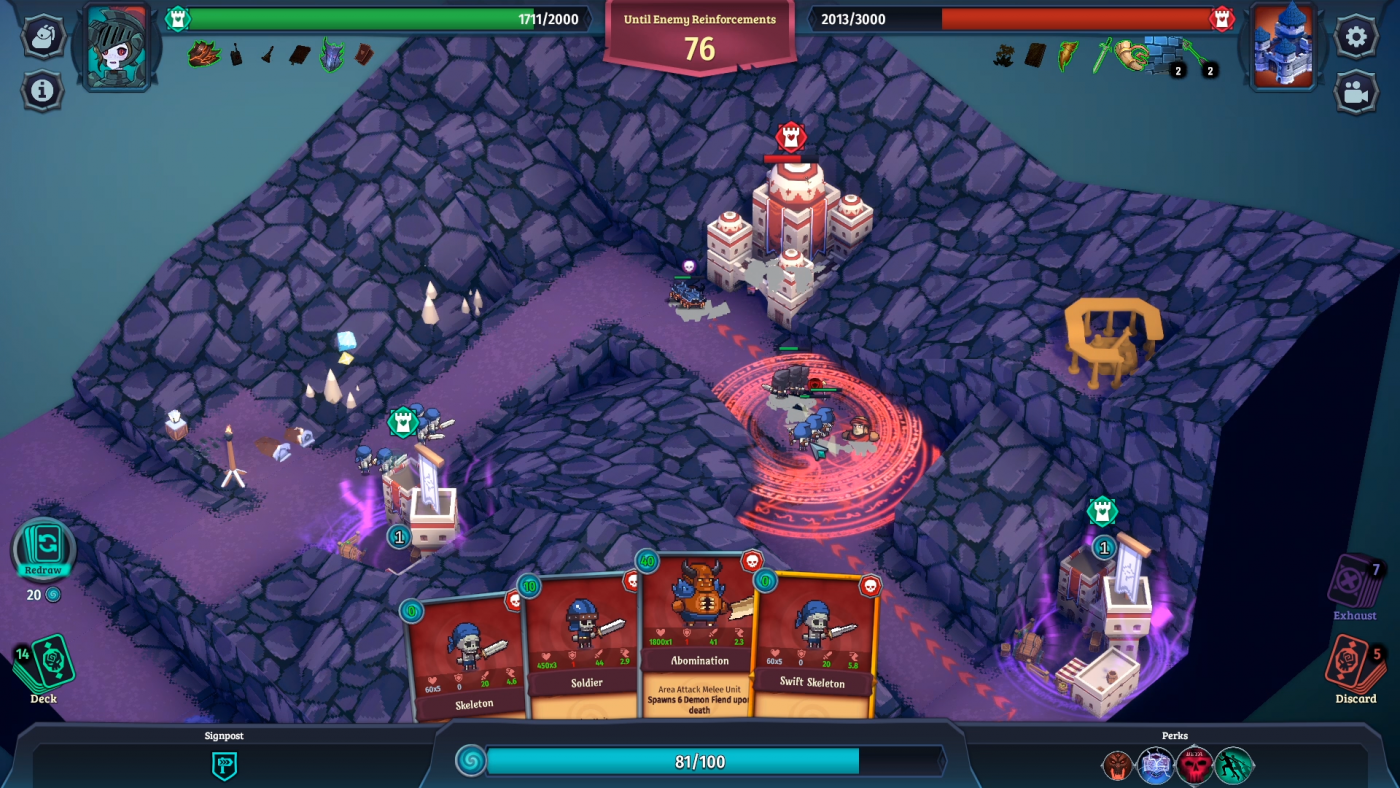Never in a million years would I have guessed that the next genre to be railroaded into the ground by indie developers would be rogue-like deck builders.
To be fair, as genres to bleed dry go it’s a good one. Combinations of encounters, decks, cards and powers all smashing into each other allow for (theoretically) endless replayability. Well, so long as the game is decent and has balance.
Also in this age of Covid 19 and inept government containment of it those of us who are of a social board gaming persuasion aren’t getting Dominion and Ascension out any time soon, so scratching that deck building itch has to come from somewhere and where better than the digital domain? No pesky friends human opponents required, no shuffling decks, no counters to keep track of, just that lovely dopamine hit of acquiring new cards and powers to combo and watching a well planned deck go off like a neutron bomb.
Necronator – Dead Wrong has a daft name, but a solid concept and something of a nice variation on the rogue-like deck builder template. You still choose a class, choose a deck, obtain cards, trim your deck down, have a mana pool to play the cards costs and all those mechanics inherent to the genre, but the way it plays out is unique because Necronator is a rogue-like deckbuilder RTS/tower defense game. I know, right? And it’s pretty rad.

You have your Portal where your dudes spawn in. Across the map is the enemy castle. You have to get your dudes to their castle and destroy them, they have to get to your Portal and destroy that. That’s the general objective, sometimes the objectives differ with leader enemies needing to be kicking in the chuff but generally it’s get to castle, smush castle, win.
Along the way are enemy Keeps. Your little minions of mayhem will attack these as they pass and once they’re captured (or Haunted as the game calls it) they will provide mana for your mana pool extra to what your Portal generates.
Sometimes there’s more than one path to get to the enemy, and as such more than one way for the enemies to reach you. There are signposts on the paths you can change to make sure you intercept the enemies before they hit your Portal.
And all this happens in real time. You can’t pause the game to decide on the best card to play so you’re managing your hand, your mana, your minions on the field while paying attention to which way the enemies are coming from and making sure your Portal still has a decent amount of health. It can get pretty frenetic.
That’s one of the delightful things about Necronator; sometimes it’s a little bit like that scene in “The Wrong Trousers”, where Gromit is on the model train engine laying tracks before the locomotive as it’s speeding along. You’re playing minions, buffing them and deciding on the best time to bin your hand and get a new one all the while having the enemy marching to your door. Sometimes the cards you’re hoping to draw never come. Sometimes you get a God hand and you’re laughing maniacally as you spawn in reduced mana cost minions that have had their armour and attack buffed.

Sometimes the inverse is true. Sometimes you get well and truly booted because the Gods of Variance don’t want to give you jack all. Because those Gods are fickle. And arseholes.
The central deck building mechanics are familiar if you’ve played anything like Slay The Spire (the gold standard in this genre, eye em oh), Monster Train, Nowhere Profit et al. You start with a deck, and you have to work your way through the map.
There are battles where you earn your XP and funds, shops to spend said funds at (either to buy new cards or trim your deck), random encounters that could earn you a new card or Relic (powerful passive bonuses that are sometimes offset by having a detriment), and rests where you can regain your health for your Portal, remove a card from your deck for free or upgrade a card.
Upgrading gives you 2 choices of how you want that card to alter. You could reduced the cards mana cost, or increase its attack or the ability to buff units around it on the field. There are usually a pool of alterations the game pulls from so no two cards tend to upgrade the same way.
Currently there are three classes in the game and each has a unique conceit. Number 7, a Death Knight and has a rank and file throw-minions-and-buff-them kind of playstyle, and is pretty straight forward.
Mirabella the Doll is interesting in that her decks revolve around toys and slowing the enemy down. You can spawn these on the paths around your portal and buildings you’ve captured, so getting those extra keeps is very beneficial to this characters play style.
Luavira Heartwing is the newest Commander and has a deliciously flavoursome theme; she’s a succubus, so portal mana generation is reduced by 90% but she has cards which drain mana from enemies and cards that can charm them to fight for you. She also has cards that reduce your Portals health for bonuses. Basically hurting yourself to gain an advantage. To offset that she has a good few healing cards as standard.

From my time playing it the game hasn’t been especially difficult. However it has completely mullered me out of nowhere so the balance may be a little off. At the beginning of each battle the game tells you what relics are active for the enemy, such as quicker spawn times for the first X seconds of the round, or silence which effectively stops you from using one of your cards if you have less than 6 units on the field.
It hit Early Access in February but went into version 1.0 at the end of July, so why has it taken me, literally, months to write this review? I honestly can’t tell you why. The game is good. It’s really good. It’s charming and entertaining and has quite a bit of ‘seat of your pants’ gaming thrills.
But I’m not hammering it like I thought I would be. And to be honest, I don’t think that’s the fault of the game. I think it reminds me that I miss the things that I’m not getting in the real world when it comes to card games. I miss my regular gaming nights. I miss shuffling decks of cards. I miss getting absolutely destroyed by my friends because the tactic of “hit it till it falls over” rarely works.
But there’s also no escaping the fact that, at its core, it’s ANOTHER rogue-like deck builder, and like I stated at the top it’s a bit of a saturated market. Necronator – Dead Wrong is solid and very entertaining, but if you have 2 or 3 of these on the go at the moment it might be too much of the same.

